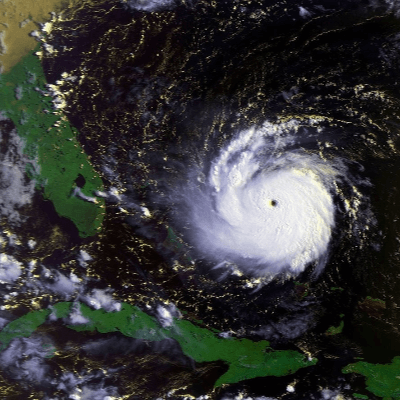
- Saffir-Simpson Rating: Category 5 Hurricane
- Highest 1-Minute Sustained Winds: 175 mph (280 km/h)
- Damage: $27.3 Billion (1994 USD)
- Death Toll: 62
- Andrew Formed: August 16th, 1992
- Andrew Dissipated: August 29th, 1992
- Affected Countries: The Bahamas and the United States of America
Above were some basic scientific facts about Hurricane Andrew. If you want more facts about Hurricane Andrew scroll down to the next section of this web page.
13 Hurricane Andrew Facts
- Hurricane Andrew formed on August 16th, 1992, east-southeast of Barbados and dissipated over the U.S. State of Pennsylvania on August 20th, 1992.
- Hurricane Andrew was a category 5 hurricane that occurred during the 1992 Atlantic Hurricane Season.
- Hurricane Andrew was a 27 on the Hurricane Severity Index, 11 points for intensity and 11 points for size.
- It’s estimated that Andrew spawned more than 28 tornadoes from formation until its dissipation.
- The highest 1-Minute sustained winds for Hurricane Andrew was 175 mph (280 km/h).
- The lowest pressure recorded for Hurricane Andrew was 922 mbar (hPA); 27.23 inHg.
- It’s estimated that the storm surge for Andrew reached 16+ feet (5.2 meters) above normal tide levels.
- The storm’s impact was felt by the Bahamas, Florida, Louisiana, Southeastern United States and the Mid-Atlantic states.
- Hurricane Andrew caused catastrophic damage and resulted in $27.3 billion (1994 USD) in losses.
- Hurricane Andrew is responsible for the deaths of 65 people.
- The largest loss of life was in the U.S. State of Florida, in Dade County, with 40 fatalities.
- Around 1.4 million people lost power during the height of Hurricane Andrew.
- The name Andrew was retired from the Atlantic tropical cyclones list names.
